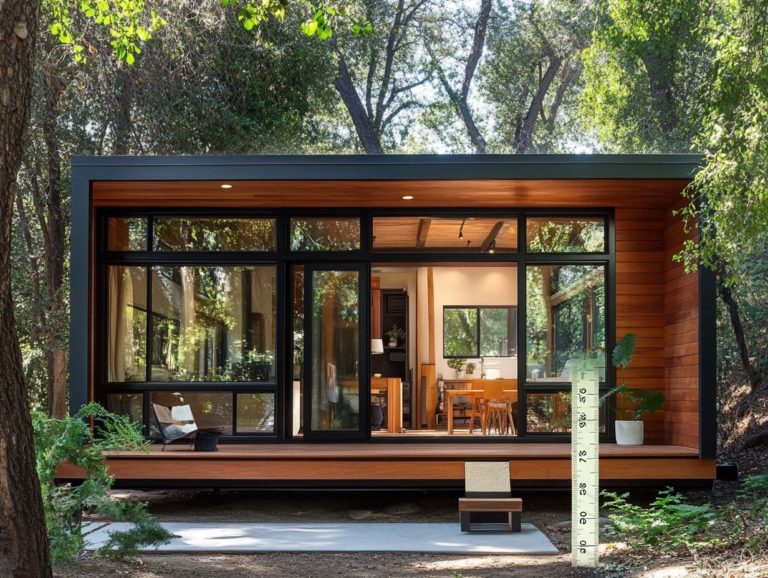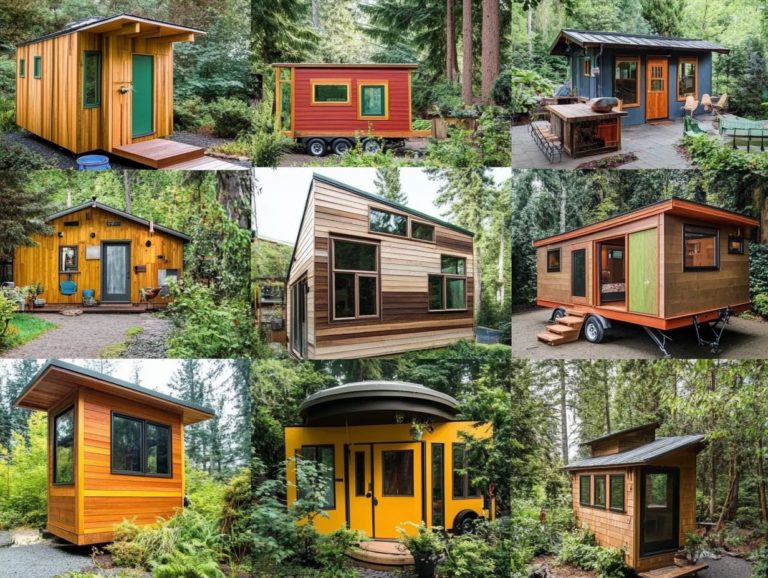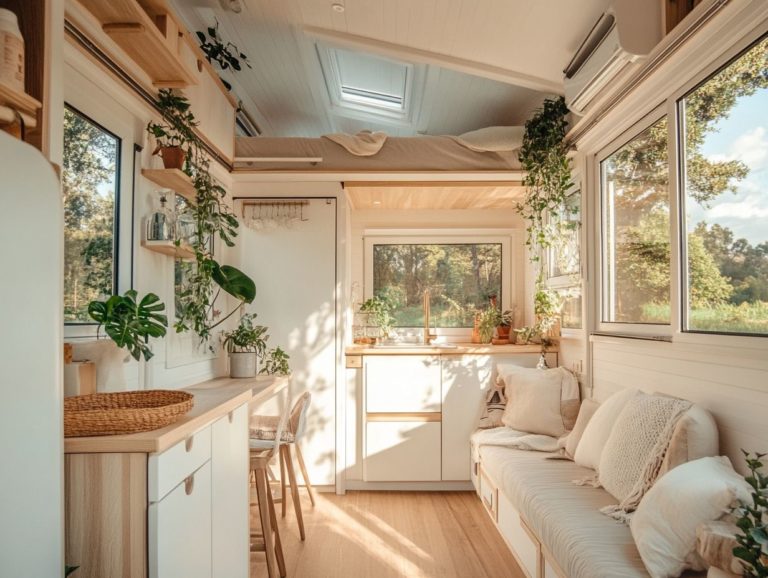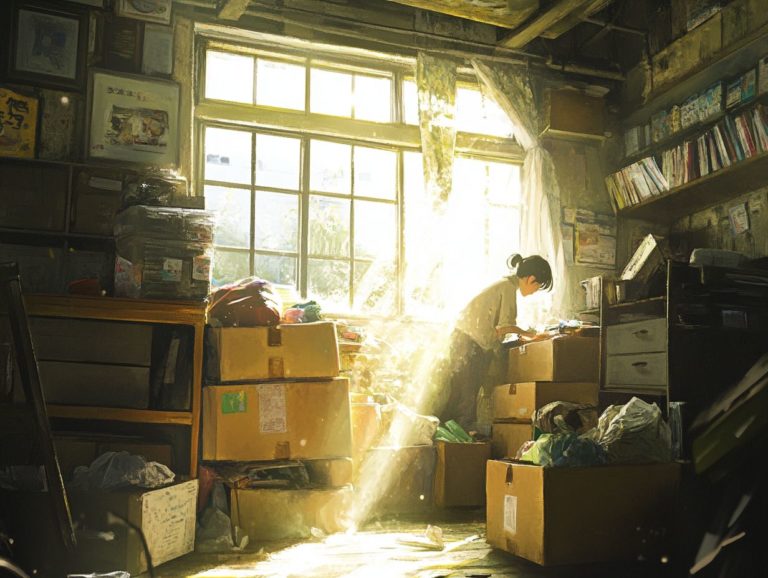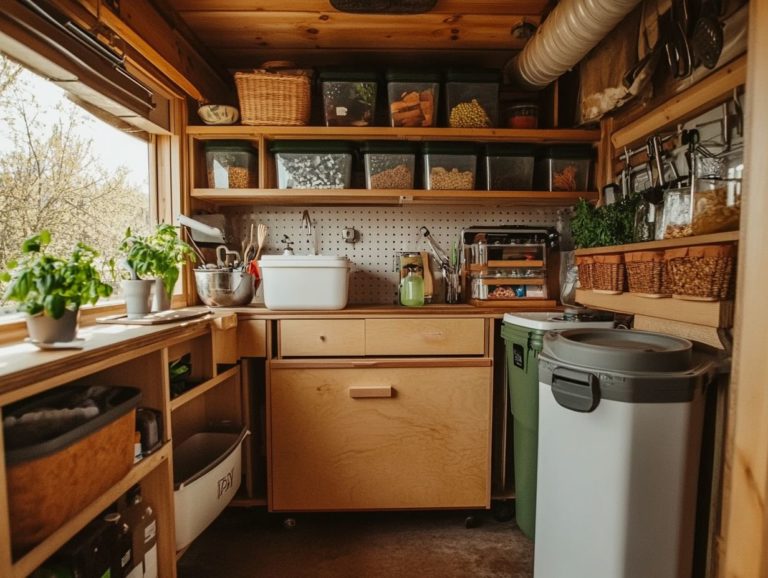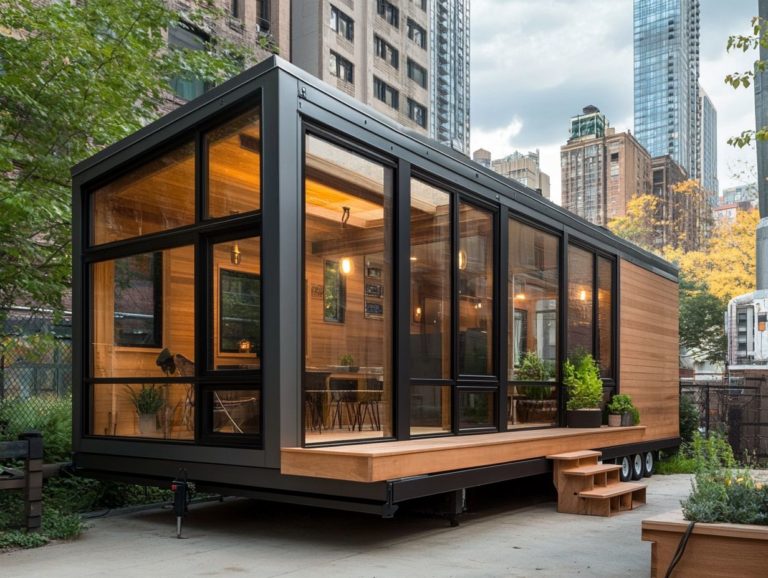Can I Live in a Tiny House Year-Round?
Tiny houses have captivated your imagination, seamlessly merging simplicity with sustainability.
But can you genuinely reside in one throughout the year? This article delves into the myriad benefits of living in tiny homes, from significant cost savings to fully embracing a minimalist lifestyle.
It also addresses crucial considerations, such as zoning regulations and necessary space adjustments, along with the essential features that ensure year-round comfort.
Plus, you’ll gain insights from firsthand experiences and valuable tips from those who have taken the plunge.
Are you ready to transform your living space today?
Contents [hide]
- Key Takeaways:
- Benefits of Living in a Tiny House Year-Round
- Considerations Before Living in a Tiny House Year-Round
- Essential Features for Year-Round Living in a Tiny House
- Personal Experiences and Tips from Tiny House Dwellers
- Frequently Asked Questions
- Can I Live in a Tiny House Year-Round?
- What are the benefits of living in a tiny house year-round?
- Do I need to have a specific location or climate to live in a tiny house year-round?
- What are some challenges of living in a tiny house year-round?
- Are there any legal considerations for living in a tiny house year-round?
- What are some important features to have in a tiny house for year-round living?
Key Takeaways:
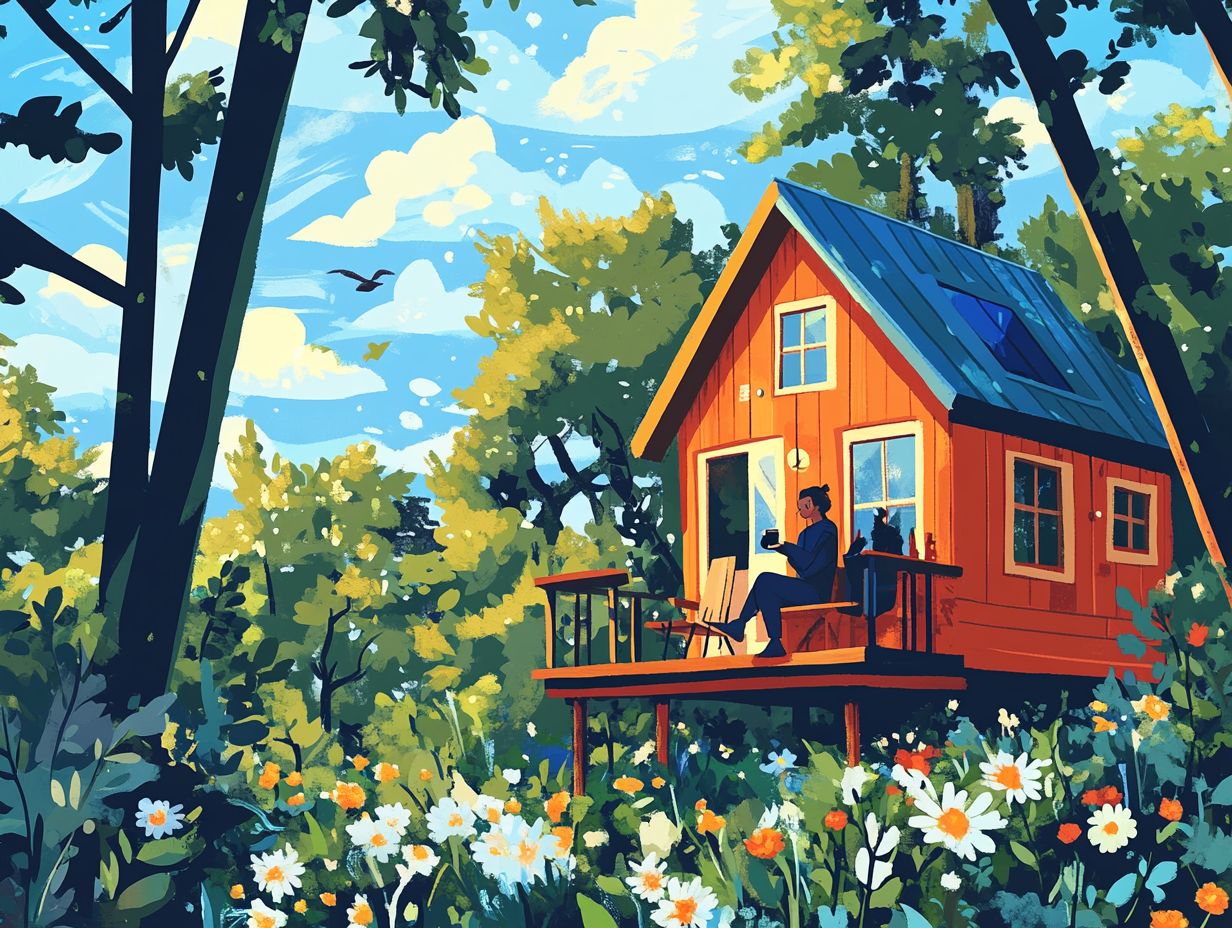
- Tiny houses offer cost savings and promote minimalistic living, making them an appealing option for year-round living.
- Before committing to living in a tiny house year-round, it is important to consider zoning laws and legal restrictions, as well as adjusting to a smaller living space.
- Proper insulation, heating options, and water/waste management systems are essential features for comfortable year-round living in a tiny house.
Defining Tiny Houses and Their Appeal
Tiny houses, or tiny homes, have surged in popularity, particularly in Colorado, as part of the tiny house movement. These compact living spaces offer a unique blend of affordability and sustainability, allowing for a minimalistic lifestyle that harmonizes with nature.
The allure lies not only in their cost-effectiveness but also in their versatility serving as permanent residences or mobile homes that grant you the freedom to inhabit diverse environments while respecting zoning laws and building regulations.
In areas like El Paso County and Park County, the tiny house trend resonates deeply with those seeking a simpler yet enriching way of life. These homes often showcase eco-friendly designs that maximize both space and energy efficiency, perfectly complementing the breathtaking landscapes that envelop them.
Experience a lifestyle that prioritizes experiences over material possessions, all while reaping the financial rewards of reduced housing costs.
Navigating the maze of zoning laws, which dictate how land can be used in your area, and building regulations is essential, as these can vary significantly from one community to another. Ultimately, this movement fosters a deeper connection to both community and nature, making it an enticing choice for many Coloradans.
Benefits of Living in a Tiny House Year-Round
Embracing the tiny house lifestyle year-round presents many benefits that resonate deeply with the principles of minimalism and sustainability. This choice can be particularly appealing for individuals and families seeking a more intentional way of living.
By opting for a compact home, you contribute to a reduced environmental footprint, as these dwellings require fewer resources for both construction and upkeep. This not only leads to significant savings on utilities and maintenance but also cultivates a simpler, more meaningful existence.
Living in a tiny house fosters a sense of community and connection, especially in vibrant areas like Colorado Springs and Hermosa Orchards Village, where camaraderie among residents thrives and promotes the sharing of resources.
Cost Savings and Environmental Impact
One of the main benefits of living in a tiny house is the significant cost savings that come with downsizing.
This choice offers a more affordable living experience and reduces your environmental impact.
With a smaller footprint, tiny homes require fewer materials for construction and typically consume less energy, making them an appealing option for eco-conscious individuals.
This reduced size means lower utility bills often slashed by as much as 60% and translates into decreased property taxes due to the lower assessed value.
Fewer square feet mean less space to clean and maintain, which further cuts down on maintenance costs.
By focusing on energy-efficient appliances and renewable energy sources, like solar panels, you can enjoy substantial savings.
On an environmental level, tiny living minimizes carbon footprints. Research indicates that tiny houses can use up to 90% less energy than conventional homes.
By relying on fewer resources and generating less waste, this lifestyle not only promotes your financial freedom but also champions a greener planet.
Minimalism and Simplified Living
The tiny house movement invites you to embrace minimalism and a simplified way of living. It encourages you to prioritize experiences over material possessions.
This shift in lifestyle supports personal growth and mindfulness while deepening your connection to the community and the environment, especially in stunning areas like Colorado’s Pikes Peak region.
By downsizing your living space, you may discover the liberating joy of decluttering. This process prompts you to reassess your priorities and focus on what truly matters.
You might find yourself sharing resources, engaging in communal gardening, or participating in local workshops, all of which foster a strong sense of belonging.
Communities in places like Durango and Fort Collins exemplify these minimalist principles by championing sustainable practices, such as recycling and utilizing renewable energy sources.
The psychological benefits of living with less can lead to reduced stress and an enhanced sense of well-being. This lifestyle frees you from the weight of possessions and debt that once felt overwhelming.
Considerations Before Living in a Tiny House Year-Round
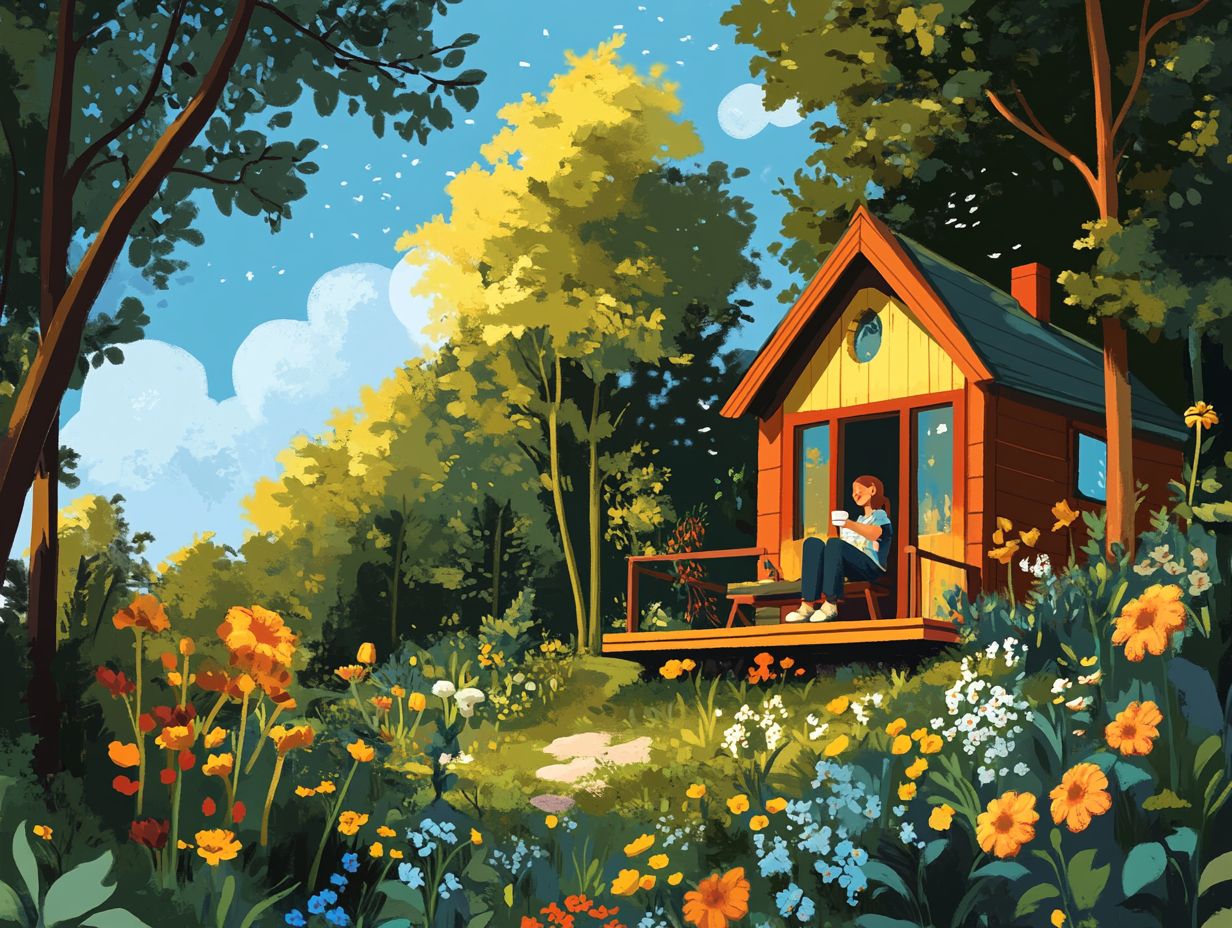
Before diving into tiny house living, you must consider some key factors. Zoning laws and building regulations can vary significantly across different regions in Colorado, and understanding these local ordinances is vital.
These laws can influence everything from where you can park your mobile tiny home to whether you can establish it as a permanent residence.
Conducting thorough research and planning is essential to ensure a smooth transition to this unique lifestyle.
Zoning and Legal Restrictions
Zoning laws and building regulations are pivotal when considering the feasibility of living in a tiny house. They dictate where and how these homes may be placed and utilized across Colorado’s varied counties.
House Bill 1242 represents a significant advancement in tackling the unique challenges associated with tiny homes. It offers more flexible zoning options and fosters the growth of tiny house communities.
Given Colorado’s diverse landscapes and community needs, understanding these regulations is essential for anyone contemplating a tiny home lifestyle.
For example, in El Paso County, recent zoning modifications have enabled tiny houses on wheels to be classified as accessories to traditional homes. This presents an innovative solution to housing shortages.
Simultaneously, Park County has recognized tiny homes as a viable option for affordable living. They have established specific zones where these dwellings can thrive without the burden of excessive bureaucratic red tape.
These case studies underscore how local adaptations to state laws can steer the development of sustainable communities, aligning with the broader objective of providing diverse housing solutions throughout the state.
Adjusting to a Smaller Living Space
Adjusting to a smaller living space in a tiny house demands significant lifestyle changes. These adaptations may initially seem overwhelming but can ultimately lead to a more fulfilling life. Embracing minimalism and learning how to prioritize your essential belongings are crucial steps to making this transition successful, fostering a sense of contentment and freedom.
Shifting your mindset from a traditional, spacious home to a small living space may invoke feelings of claustrophobia or overwhelm at first. To combat these emotions, it s vital to emphasize organization strategies. Consider creating designated spaces for every item and using vertical storage options to make the most of your space.
Insights from current inhabitants suggest that adopting daily routines can help. Regularly purging unnecessary items and incorporating multifunctional furniture can maximize your living area and promote a healthier perspective on possessions. These practices have the power to transform what once felt like a daunting challenge into an empowering journey, allowing you to thrive in your new, minimalist lifestyle.
Essential Features for Year-Round Living in a Tiny House
To achieve a comfortable year-round living experience in a tiny house, it’s essential that you incorporate several key features into your design and construction. Prioritizing adequate insulation, reliable heating options, and efficient water and waste management systems is vital for maintaining a cozy and functional environment, particularly given the diverse climates across Colorado.
Each of these elements plays a crucial role in ensuring that your compact home remains a sanctuary, no matter the weather outside. This ultimately provides a viable option for mobile homes in the region.
Insulation and Heating Options
Proper insulation and effective heating options are essential for keeping your tiny house comfortable year-round, especially in colder climates like Colorado. By investing in energy-efficient insulation materials and exploring various heating solutions, you can significantly enhance the livability of your tiny home while reducing energy consumption and utility costs.
Consider materials like spray foam, fiberglass, and cellulose, each of which brings its own unique benefits and challenges to the table. Spray foam creates an excellent air barrier, while fiberglass often wins in the cost department, and cellulose shines as a sustainable option made from recycled paper.
When it comes to heating, you can choose from several options: electric heaters are quick and easy to install, wood stoves add a cozy touch, and radiant floor heating systems ensure even warmth throughout your space. By maximizing insulation and carefully selecting your heating methods, you can enjoy a comfortable environment without compromising on energy efficiency or racking up excessive long-term costs.
Water and Waste Management Systems
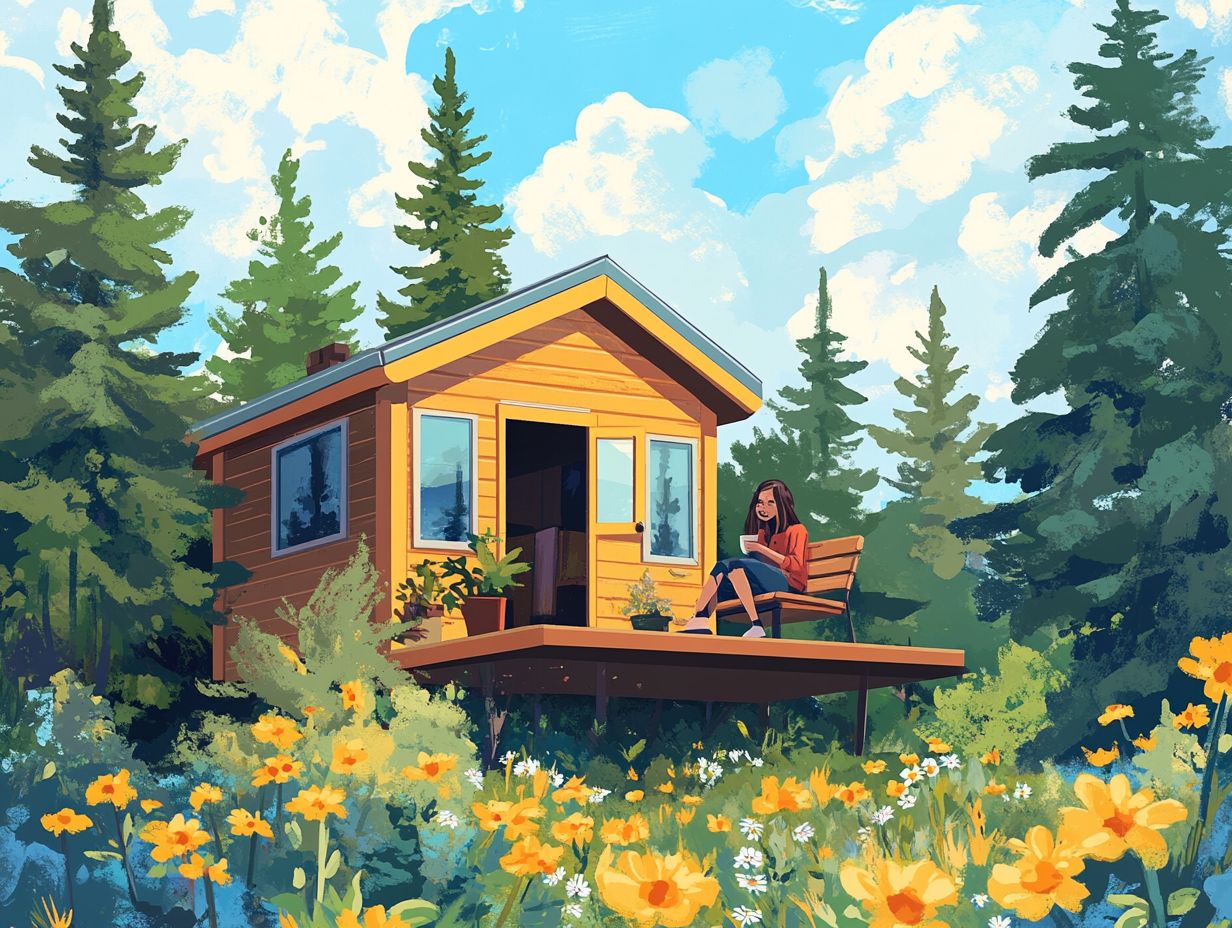
Effective water and waste management systems are vital for your tiny house, ensuring both sustainability and convenience for those living there year-round. By incorporating innovative solutions like composting toilets and rainwater harvesting systems, you can significantly minimize your environmental impact while enjoying a functional and comfortable living space.
These systems elevate your quality of life and foster a sense of community grounded in shared environmental values. Take, for example, the tiny house communities in Colorado, where residents have successfully implemented gray water recycling techniques. This allows them to reuse water from sinks and showers for irrigation, conserving precious water resources and enriching local ecosystems. It s all about creating a harmonious balance between your living space and the natural world.
Solar-powered waste treatment options are gaining popularity, showcasing how eco-friendly technologies can elevate waste management into a sustainable practice. Embracing these solutions not only enhances your daily living but also contributes positively to the environment around you.
Personal Experiences and Tips from Tiny House Dwellers
Personal stories from tiny house dwellers provide invaluable insights into this unique lifestyle. They offer practical advice on downsizing and share the emotional journey of embracing minimalism.
Challenges and Adaptations
Living in a tiny house presents unique challenges and calls for innovative adaptations. You’ll discover clever storage solutions and ways to embrace a minimalist lifestyle.
Limited space means you must be selective about your possessions. Prioritizing functionality over excess is key, and many choose multi-purpose furniture to enhance usability.
Resource management is crucial. Many adopt energy-efficient solutions like solar power and rainwater collection systems, leading to a sustainable lifestyle.
This journey fosters a deeper appreciation for your surroundings and strengthens community bonds.
Advice for Prospective Tiny House Residents
If you’re considering tiny house living, advice from seasoned residents can make all the difference. Important tips include embracing minimalism, researching zoning laws, and connecting with local tiny house communities.
One resident noted, “Living tiny isn’t just about the space; it’s about the mindset. You start to appreciate what you have when every item serves a purpose.” This highlights the transformative power of a minimalist approach.
Connecting with fellow enthusiasts fosters a sense of belonging and helps you navigate local regulations. Attend meet-ups or dive into online forums for invaluable insights that can ease your transition into a compact lifestyle.
Frequently Asked Questions
Can I Live in a Tiny House Year-Round?

Yes, you can live in a tiny house year-round as long as it is properly built and equipped for all seasons.
What are the benefits of living in a tiny house year-round?
Living in a tiny house year-round can save money on housing costs, reduce your carbon footprint, and encourage a minimalist lifestyle.
Do I need to have a specific location or climate to live in a tiny house year-round?
No, tiny houses can be built and designed to accommodate various locations and climates, making it possible to live in one year-round almost anywhere.
What are some challenges of living in a tiny house year-round?
Some challenges of living in a tiny house year-round include limited space, storage, and potentially adjusting to a simpler lifestyle.
Are there any legal considerations for living in a tiny house year-round?
Yes, it is important to research and follow local laws and regulations regarding tiny houses before living in one year-round.
What are some important features to have in a tiny house for year-round living?
Proper insulation, heating and cooling systems, durable materials, and space-saving design are all important features to consider for living in a tiny house year-round.

